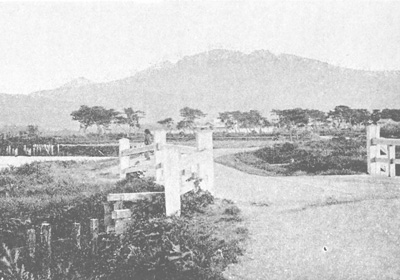Column <Tohoku>
6 Mt. Hakkoda
"Hakkoda" is not actually a single mountain, but rather a collective name for a range of 18 peaks. There is a north Hakkoda mountain range and a south Hakkoda mountain range and Mt. Odake (height 1584 m) is the main peak of the north range which has a total of eight peaks, including Mt. Idodake (1550 m), Mt. Akakuradake (1548 m) and Mt. Tamoyachidake (1334 m), and it is said that the mountains were given the name "hakko" because the majority of them are shaped like kabuto helmets and the Kanji characters for "hakko" mean "eight helmets". In addition, the high plateau marsh in the mountains is called "the rice paddy of the gods", and it is said the "da" in the "Hakkoda" name comes from this as the kanji character means "rice paddy".
At present, Mt. Hakkodasan is well known, however, surprisingly, up until 1902 this area was relatively unknown. The writer Omachi Keigetsu, who loved the nature of Aomori-ken (Aomori Prefecture), wrote the following in his contribution to the Yuki no Hakkodasan in 1923:
"The famous mountains in the ancient Mutsu province were Mt. Iwaki and Mt. Osore. Mt. Hakkoda however, first came to be known to the wider world due to the march in the snow tragedy in 1902."
Mt. Hakkoda came to be known to the entire country as a result of the "march in the snow tragedy" mentioned in the above quote, which refers to the "Hakkoda Mountains Incident" of January 1902. This was a tragic mishap on January 23, where the Imperial Japanese Army's 8th Division's 5th Infantry Regiment was making its way from Aomori-shi (Amotori City) towards Mt. Hakkoda's Tashiro Hot Spring as a training exercise in the snow, when they became lost as a result of a sudden cold wave, and 199 of the total 210 soldiers died. The details of the mishap can be learned from the Sonan Shimatsu report on the incident.
This disaster was communicated throughout the country by newspapers, and people sent donations to the bereaved families. This is how Mt. Hakkoda came to be known all over Japan. The incident was also written about later in the novel Hakkodasan Shi no Hoko by Nitta Jiro, which was subsequently converted into dramas and movies and is still a famous disaster even today.
In continuation of the above-quoted text, Omachi Keigetsu also wrote, "as a result the mountain has come to be known only as a mountain of fear, and it is still not well known that there is a hot spring on top of the mountain and that it offers opportunities for enjoyment as well. There is a field of flowers on the belt area of Pinus Pumila, with the characteristics of a tall mountain, giving the field an atmosphere like a shrine garden in the heavens, but this is also still not well known. It is also still not well known that it is a site of true beauty, the highest mountain near to Towada Lake, and is a sight that must be seen when its geographical features are viewed together with Towada Lake." In reality, while Mt. Hakkoda has a severe climate during the winter, it also features as yet untouched nature, and beautiful scenery throughout the four seasons such as the precious alpine flora which could be seen in the spring and summer, the changing of the autumnal leaves covering the mountain in autumn, and the trees covered with hoarfrost and rime in the winter.
Keigetsu was fond of Hakkoda, and spent his later years at Tsuta Hot Spring located halfway up the mountain in the south Hakkoda range. The skier Miura Keizo (father of mountaineer Miura Yuichiro) met Keigetsu at Tsuta Hot Spring in 1925, and wrote the following of the meeting.
"We met Omachi Keigetsu, the once famous writer. Keigetsu sat at a heated kotatsu table and gulped down sake, and although he should have only been in his 50's, his hair was completely white, and he seemed to be more like a man of 90. He had a strong stammer, making his speech difficult to understand, and he used the master of the hot spring as a sort of "interpreter" to have a chat with Mr. Nishimura (*a former teacher from his middle school years); however as I recall the entire conversation consisted only of praise of the Tsuta Hot Spring and the beauty of Hakkoda's nature" (Daikakko eno 50 nen)
Mt. Hakkoda was designated a national park, together with Towada Lake and Oirase, in 1936, and thereafter as Towada-Hachimantai National Park became a place where those who sought to enjoy bountiful nature would gather. This was a region which was once unable to be reached in the winter as the national highways were closed due to snow, but after the appeal of skiing on winter mountains was introduced by Miura Keizo, who worked for the Aomori regional forestry office, large numbers of people began to visit even in the winter, continuing on to today.
Reference
- Omachi Keigetsu, Keigetsu Kiko Bunshu, Shunyodo, 1933 【特263-94】
- Sonan Shimatsu, Hohei Dai go Rentai, 1902 【特51-206】
- Nitta Jiro, Hakkodasan Shi no Hoko, Shinchosha, 1971 【KH437-37】
- Miura Keizo, Daikakko eno 50 Nen: Eberesuto, Fuji, Hakkoda, Zitsugyo no Nihonsha, 1970 【FS41-27】
